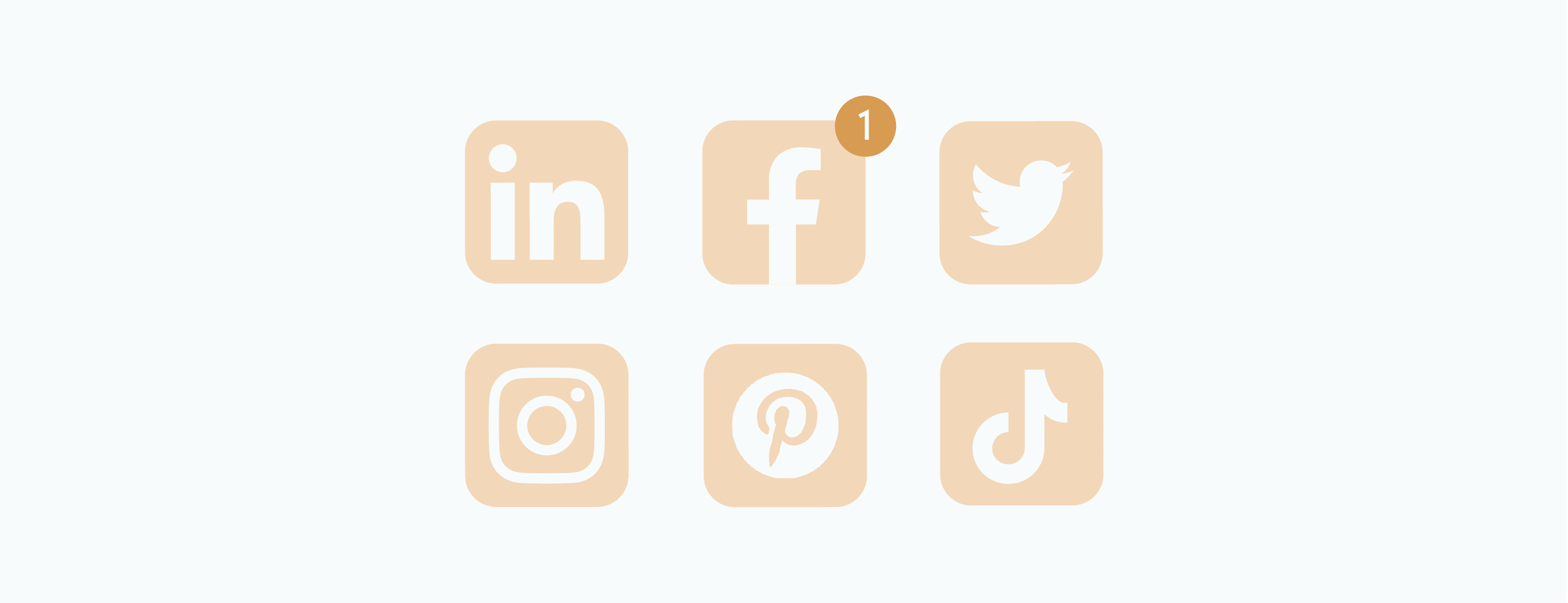Let’s be honest, social media platforms have arguably become the most important form of communication in daily life. Don’t believe me? When was the last time you went a full day without checking your social media?
Yeah — that’s what we thought.
It’s hard to imagine the world we live in today without social media, but few people know the history of the apps that we use on a daily basis. Was it really only a decade ago that we were introduced to hashtags for the first time? Some of us remember calling it the pound key. (Yikes, did I accidentally date myself? Forget you read that.)
Here’s a quick timeline:
MAY 2003
LinkedIn launched
LinkedIn is a professional networking website. The platform allows users to form connections, with business professionals as a new method of networking — If you are someone who doesn’t like networking, then this is your holy grail. LinkedIn can also be used to hunt for a new job or internship, and it’s not too shabby when trying to learn industry-relevant skills.
FEB 2004
Facebook launched
Ahh yes, the dawn of internet addiction — just kidding, kind of. Facebook is a social media website that allows users to connect with friends, colleagues, or even strangers online. Pictures, videos, articles, and statuses are available via a user’s news feed. In its infancy, Facebook was only used within Private Colleges and you had to have a college email to sign up. 16 years later, even my grandma is on Facebook! With over 2.7 billion monthly active users, you can say Facebook took the internet by storm.
MAR 2006
Twitter launched
Twitter is a miniature blogging platform allowing users to compose short posts called tweets. Following a user means their tweets are shown on your timeline. Tweets can be 140 characters long, and people truly show how creative they can be, even with a short character count. Does anyone else hear news on Twitter before they see it on the actual news? Just me?
NOV 2007
Facebook launches Facebook Ads
Facebook is back at it again with a new addition — ads. As Facebook matured, businesses took advantage of the opportunity. They now use the platform as a tool to target audiences with ads to grow their following. Once an ad is created, it’s shown to specific users based on their location, demographic, and profile information. This was the beginning of paid social media advertising as we know it. Though Facebook was the first platform to launch paid advertising, it is now available on all platforms. This is how social media remains free for its users.
JUL 2009
Hashtags launched by Twitter
Hashtags allow the grouping of social media content. Using a specific hashtag puts your content in that group whether the content is about a specific event, topic, or conversation. Hashtags also make it easier for users to discover posts about those topics because a search for a hashtag will bring up all posts that mention that hashtag. Though Twitter was the first platform to launch hashtags, they are now available on all platforms, and some people even slip them in conversation. I guess you can say they are trendy.
JAN 2010
Pinterest launched
Pinterest is a visual discovery tool. Content includes DIY projects, home and style inspiration, recipes, and more. Users can save inspiring content to boards as a way to keep ideas organized and stay on top of the latest Christmas cookie recipe.
OCT 2010
Instagram launched
Instagram, my personal favorite, is a social media platform that allows users to share photos or videos with their followers. Instagram is highly visually driven and favors visual content over verbal. Users can follow the profiles of their friends, family, businesses, or even their favorite celebrities, so they never miss out on the latest update.
JUL 2011
Snapchat launched
Snapchat is a social media messaging platform that allows users to exchange pictures and videos with text. These messages, called snaps, disappear after they are viewed. Then, in 2013, Snapchat launched what we now know as stories. Other platforms didn’t skip a beat when it came to adding stories to their list of offerings.
FEB 2016
Facebook launches Facebook Live
Facebook pushed its limitations once again by creating Facebook Live — a feature that allows users to broadcast to their timeline in real-time. Comments and reactions to the video can also be made in real-time and allow broadcasters to engage with their audience.
SEP 2016
TikTok launched
Much like the app Vine from 2013 (RIP), TikTok uses short looping videos of up to 60 seconds long where users can post videos and grow a following. Although the app launched in 2016, it has only been available in the United States since 2018, making it the newest platform out of the bunch. With 800 million active users, our spidey senses tell us this platform isn’t going anywhere anytime soon. TikTok might just be the future for successful digital marketing.
Want to know more about the world of social media? Click here to broaden your social media vocabulary or learn how to increase your audience!
